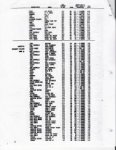iceworm
Curmudgeon still using printed IEEE Color Books
- Location
- North of the 65 parallel
- Occupation
- EE (Field - as little design as possible)
I like the "brown gas" crowd.
Me: Let me see if I understand. You are burning gasoline to produce horsepower (28%) to spin at alternator to produce electricity (90%). The electricity separates the water into H2 and O2, both combined in the same container and piping. The O2, H2 mix is then drawn into the intake manifold along with the gasoline-air mix, and then into the cylinders and burned to produce horsepower. Is that correct?
Them: Yes
Me: And the engine produces enough more horsepower to turn the alternator to get the electricity to split the water into H2, O2?
Them: Oh, absolutely. Enough more horsepower that the engine takes less gasoline to move the car.
Me: So, we get more energy out of burning the H2, O2 that it took to split the water. That's a pretty healthy violation of the First and Second Laws of Thermodymanics.
Them: No response
Me: Let's continue. The Electrolysis container and piping all contain an optimum flammable mix of O2, H2. If there is the least bit of a backfire, how is this mix stopped from detonating - as in exploding.
Them: Huh ......
Me: Let me see if I understand. You are burning gasoline to produce horsepower (28%) to spin at alternator to produce electricity (90%). The electricity separates the water into H2 and O2, both combined in the same container and piping. The O2, H2 mix is then drawn into the intake manifold along with the gasoline-air mix, and then into the cylinders and burned to produce horsepower. Is that correct?
Them: Yes
Me: And the engine produces enough more horsepower to turn the alternator to get the electricity to split the water into H2, O2?
Them: Oh, absolutely. Enough more horsepower that the engine takes less gasoline to move the car.
Me: So, we get more energy out of burning the H2, O2 that it took to split the water. That's a pretty healthy violation of the First and Second Laws of Thermodymanics.
Them: No response
Me: Let's continue. The Electrolysis container and piping all contain an optimum flammable mix of O2, H2. If there is the least bit of a backfire, how is this mix stopped from detonating - as in exploding.
Them: Huh ......
Last edited:




